If you’re a rookie poker dealer or first-time poker player, being aware of potential cheats lurking at the table can be really important. One such cheat is marked cards – a sneaky technique used by unscrupulous players to gain an unfair advantage. Find out more about it at https://www.fiz-x.com/what-you-need-to-know-about-marked-cards-in-2022/. But in this post, you’ll be equipped with helpful tips and tricks for spotting those ill-intentioned marked cards.
Know the Common Marking Methods
While there are countless ways these cheaters can mark a deck, some techniques have become more prevalent over time.
- Tiny scratches on the card’s surface: By running your fingers gently across the card backs, you may be able to feel these imperfections that would otherwise go easily unnoticed by the naked eye.
- Special Patterns With Specialized Ink: To detect these alterations, it’s advisable to examine each card under different lighting conditions – natural light, fluorescent light, and even UV light if available – as this can reveal hidden patterns or discrepancies.
Remember, being knowledgeable about these common marking methods will give you an edge in protecting yourself against potential cheats at the poker table.
Examine Cards Under Different Lighting
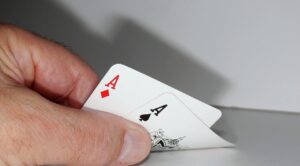 Different lighting can bring out different details that may not be immediately visible under normal circumstances. One way to do this is by using a bright light source, such as a flashlight or overhead lamp, and shining it directly onto the cards. This can help you spot any subtle differences or markings that might have been added to give certain players an unfair advantage. Another method is to view the cards under ultraviolet (UV) light. UV light has unique properties that can reveal hidden marks or substances that are invisible under regular lighting conditions. By examining the cards under UV light, you may be able to detect any irregularities or alterations made on them.
Different lighting can bring out different details that may not be immediately visible under normal circumstances. One way to do this is by using a bright light source, such as a flashlight or overhead lamp, and shining it directly onto the cards. This can help you spot any subtle differences or markings that might have been added to give certain players an unfair advantage. Another method is to view the cards under ultraviolet (UV) light. UV light has unique properties that can reveal hidden marks or substances that are invisible under regular lighting conditions. By examining the cards under UV light, you may be able to detect any irregularities or alterations made on them.
Feel for Texture Differences
To feel for texture differences, you need to have a good sense of touch and pay close attention to how the cards feel in your hands. Run your fingers gently across the surface of each card and take note of any irregularities or inconsistencies. Are there areas that feel smoother or rougher than others? These variations could be signs of markings or alterations. If you notice significant deviations, such as certain cards feeling noticeably different from the rest, it could be cause for suspicion. Another thing to consider is how the cards are being handled during gameplay. Do they shuffle easily, or do they stick together more than usual? Paying attention to these tactile cues can help you identify if there are any unexpected textures present.

Watch Players’ Behavior
Last but not least, while not foolproof, certain behaviors and reactions can provide clues that something may be amiss. So, observe how players handle their cards. Are they overly protective of them? Do they avoid showing their cards when they fold? These could be signs that someone is trying to conceal markings or alterations.
Additionally, take note of any unusual movements or gestures made by players during the game. Nervous twitches or fidgeting might indicate that someone is hiding something. Remember, though, these observations should never be used as definitive proof of marked cards without further investigation.…


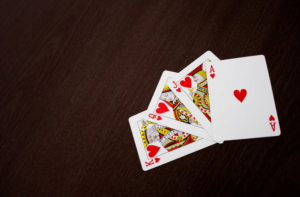
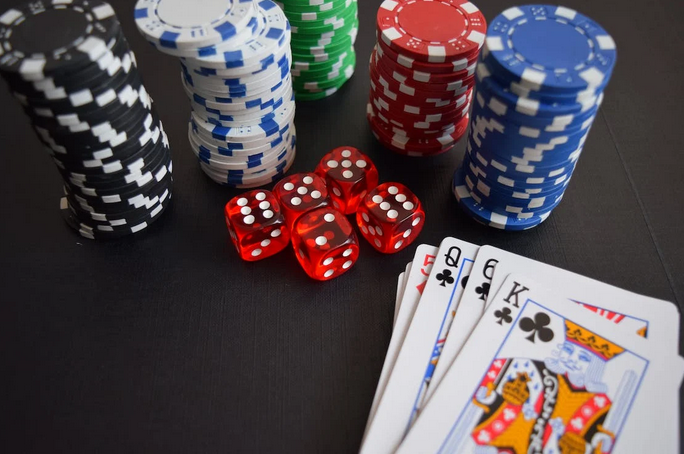
 The best way to become a poker expert is to practice as much as possible. Play with friends or against the computer and try out different strategies until you find what works best for you. There are even online tournaments and leagues that you can join to test your skills against other players. The more practice you get, the better you will become at making strategic decisions and reading your opponents.
The best way to become a poker expert is to practice as much as possible. Play with friends or against the computer and try out different strategies until you find what works best for you. There are even online tournaments and leagues that you can join to test your skills against other players. The more practice you get, the better you will become at making strategic decisions and reading your opponents. Poker is a game of skill and strategy, but it can also be emotionally charged. To become a poker expert, you must be able to control your emotions and stay focused on the game. When you make a bad decision or lose a big hand, don’t let it get to you. Instead, take a deep breath and move on. This will help ensure that you remain level-headed and make better decisions in the future.
Poker is a game of skill and strategy, but it can also be emotionally charged. To become a poker expert, you must be able to control your emotions and stay focused on the game. When you make a bad decision or lose a big hand, don’t let it get to you. Instead, take a deep breath and move on. This will help ensure that you remain level-headed and make better decisions in the future.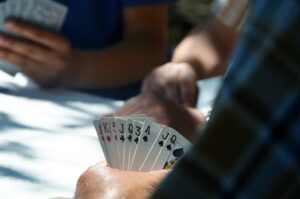
 One reason why poker players lose is that they don’t have a good strategy in place. A good strategy considers the game, your opponents, and your abilities. It also considers variables such as position and stack size. Without a solid plan of attack, you are likely to make mistakes that will cost you money. Practice your
One reason why poker players lose is that they don’t have a good strategy in place. A good strategy considers the game, your opponents, and your abilities. It also considers variables such as position and stack size. Without a solid plan of attack, you are likely to make mistakes that will cost you money. Practice your 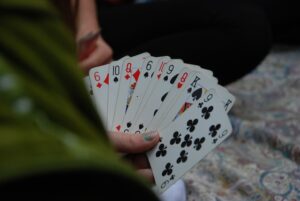 Another reason why poker players lose is that they fail to adapt to their opponents. It’s easy to follow a routine and play the same way every time, but this can be costly in poker. Every opponent has different tendencies and weaknesses, so you must pay attention and adjust your game accordingly. Take the time to observe your opponents and adjust your strategy to maximize your winnings. This is how professional poker players stay ahead of their competition.
Another reason why poker players lose is that they fail to adapt to their opponents. It’s easy to follow a routine and play the same way every time, but this can be costly in poker. Every opponent has different tendencies and weaknesses, so you must pay attention and adjust your game accordingly. Take the time to observe your opponents and adjust your strategy to maximize your winnings. This is how professional poker players stay ahead of their competition. The last reason why poker players lose is that they let their emotions get the best of them. Anger, fear, and frustration can all lead to bad decisions that are costly in the long run. It’s important to stay calm and reason when you play poker, so you don’t make any hasty decisions. Take a break when you feel yourself getting angry or frustrated, and focus on your strategy. Even if you have a great run, it’s important to stay focused and never let your emotions control the game. Some stop and play the next day again when they have a refreshed and calmer mindset.
The last reason why poker players lose is that they let their emotions get the best of them. Anger, fear, and frustration can all lead to bad decisions that are costly in the long run. It’s important to stay calm and reason when you play poker, so you don’t make any hasty decisions. Take a break when you feel yourself getting angry or frustrated, and focus on your strategy. Even if you have a great run, it’s important to stay focused and never let your emotions control the game. Some stop and play the next day again when they have a refreshed and calmer mindset. 
 Have you ever wondered why the big stacks seem to be at the top of the leaderboard? It’s because they’re raising their bet sizes. By doing this, they can win more pots and grow their stack size much faster than everyone else. To build a big stack in poker tournaments, you need to raise your bet sizes. Of course, this doesn’t mean you should go all-in every hand. You still need to be selective with your hands and only raise them when you have a strong hand. But when you do have a strong hand, don’t be afraid to put in a large bet.
Have you ever wondered why the big stacks seem to be at the top of the leaderboard? It’s because they’re raising their bet sizes. By doing this, they can win more pots and grow their stack size much faster than everyone else. To build a big stack in poker tournaments, you need to raise your bet sizes. Of course, this doesn’t mean you should go all-in every hand. You still need to be selective with your hands and only raise them when you have a strong hand. But when you do have a strong hand, don’t be afraid to put in a large bet.
 Not that you should be copying everything they do, but it’s always a good idea to keep an eye on the other big stacks. See how they’re playing and try to learn from them. By doing this, you’ll be able to adapt your own game and build a big stack of your own. Keep in mind that the best way to learn is by doing. You’ll find the best strategy for building a big stack that will dominate other players.
Not that you should be copying everything they do, but it’s always a good idea to keep an eye on the other big stacks. See how they’re playing and try to learn from them. By doing this, you’ll be able to adapt your own game and build a big stack of your own. Keep in mind that the best way to learn is by doing. You’ll find the best strategy for building a big stack that will dominate other players.

 Finally, it is essential to remember that reading people is a skill that takes time and practice to perfect. The more you play poker, the better you will become at picking up on the different tells that people give off. With enough exercise, you can make better decisions at the table and ultimately win more games. To be a successful poker player, you must learn how to read your opponents. By paying attention to physical and behavioral tells, you can better understand what people are thinking and use that information to your advantage. You will become better at reading people and winning more games with practice. Try these tips the next time you sit at the poker table and see how they can help you take your game to the next level.…
Finally, it is essential to remember that reading people is a skill that takes time and practice to perfect. The more you play poker, the better you will become at picking up on the different tells that people give off. With enough exercise, you can make better decisions at the table and ultimately win more games. To be a successful poker player, you must learn how to read your opponents. By paying attention to physical and behavioral tells, you can better understand what people are thinking and use that information to your advantage. You will become better at reading people and winning more games with practice. Try these tips the next time you sit at the poker table and see how they can help you take your game to the next level.…
 The first thing you need to do when you’re dealt a bad hand is to stay calm and focused. It’s easy to get tilted (for example, angry or frustrated) when you lose a few hands in a row, but keeping your emotions in check is essential. Bluffing may not be an option if you’re angry or frustrated, as your opponents will be able to see right through you. So take a deep breath and try to relax. If you can keep your head in the game, you’ll be more likely to make the right move when the time comes.
The first thing you need to do when you’re dealt a bad hand is to stay calm and focused. It’s easy to get tilted (for example, angry or frustrated) when you lose a few hands in a row, but keeping your emotions in check is essential. Bluffing may not be an option if you’re angry or frustrated, as your opponents will be able to see right through you. So take a deep breath and try to relax. If you can keep your head in the game, you’ll be more likely to make the right move when the time comes. The next thing you need to do is take a step back and analyze the situation. Ask yourself what your options are and what the best course of action would be. If you can’t figure it out on your own, don’t be afraid to ask a friend or fellow poker player for their opinion. It’s better to get a second opinion than to make a mistake that could cost you the pot. Once you’ve analyzed the situation, it’s time to make your move. If you think you can win the hand, then go for it. But if you’re not confident in your hand, it’s better to fold and save yourself from taking a significant loss.
The next thing you need to do is take a step back and analyze the situation. Ask yourself what your options are and what the best course of action would be. If you can’t figure it out on your own, don’t be afraid to ask a friend or fellow poker player for their opinion. It’s better to get a second opinion than to make a mistake that could cost you the pot. Once you’ve analyzed the situation, it’s time to make your move. If you think you can win the hand, then go for it. But if you’re not confident in your hand, it’s better to fold and save yourself from taking a significant loss.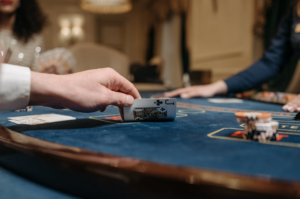 As mentioned, if you’re lucky enough to find a way to win the hand, great. But if not, don’t dwell on it. Instead, focus on your next hand and try to make the best of it. Remember, poker is a game of ups and downs. So even if you have a bad run, there’s always a chance that things will turn around in your favor. Just stay positive and focus on making the best possible play.
As mentioned, if you’re lucky enough to find a way to win the hand, great. But if not, don’t dwell on it. Instead, focus on your next hand and try to make the best of it. Remember, poker is a game of ups and downs. So even if you have a bad run, there’s always a chance that things will turn around in your favor. Just stay positive and focus on making the best possible play.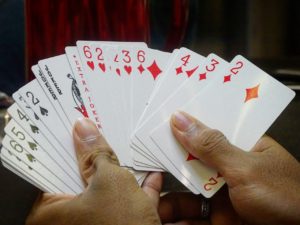
 One easy way to improve your odds of winning at Pai Gow Poker is to make a side bet. It is an optional bet that can be made in addition to the main bet. The side bet pays out if you are dealt a specific hand, such as a flush or straight. While the payout for the side bet is usually lower than the main bet, it is an excellent way to increase your chances of winning. Another tip is always to play the highest hand possible. It may seem obvious, but many players make the mistake of playing their lowest hand in an attempt to bluff their opponents.
One easy way to improve your odds of winning at Pai Gow Poker is to make a side bet. It is an optional bet that can be made in addition to the main bet. The side bet pays out if you are dealt a specific hand, such as a flush or straight. While the payout for the side bet is usually lower than the main bet, it is an excellent way to increase your chances of winning. Another tip is always to play the highest hand possible. It may seem obvious, but many players make the mistake of playing their lowest hand in an attempt to bluff their opponents. Even when following all of the tips above, there is no guarantee that you will win every hand. That is why it is essential to be smart with your bankroll management. Do not bet more than you can afford to lose, and always walk away when you are ahead. Chasing losses is a surefire way to lose all of your money. If you stick to these tips, you will be well to win at Pai Gow Poker. Pai Gow Poker is an excellent game for those who enjoy playing poker. But it’s not that easy to win all the prizes. That’s why we’ve developed some tips and tricks to improve your winning odds. By following these simple tips, you’ll be well on your way to becoming a Pai Gow Poker champion in no time.…
Even when following all of the tips above, there is no guarantee that you will win every hand. That is why it is essential to be smart with your bankroll management. Do not bet more than you can afford to lose, and always walk away when you are ahead. Chasing losses is a surefire way to lose all of your money. If you stick to these tips, you will be well to win at Pai Gow Poker. Pai Gow Poker is an excellent game for those who enjoy playing poker. But it’s not that easy to win all the prizes. That’s why we’ve developed some tips and tricks to improve your winning odds. By following these simple tips, you’ll be well on your way to becoming a Pai Gow Poker champion in no time.…